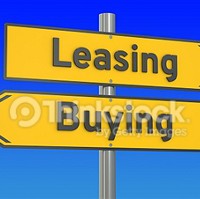Auto leasing reaching all-time highs
- Details
- Published on Friday, 29 July 2016 17:08
- Written by The Peorian
More new vehicles were leased in the first half of 2016 than during the first half of any other year in history, according to the latest Lease Market Report from Edmunds.com, the leading car shopping and information network.
Lease volume has doubled in the last five years, suggesting that the automotive market could be on the verge of a fundamental shift in consumer mindset about the value of owning a new vehicle -- particularly when the purchase has to be financed.
The Millennial generation is driving this change, with a higher rate of lease penetration than any other generation (34.2 percent), but the strongest growth has come from shoppers over the age of 75. During the first six months of this year, more than 32 percent of cars sold to this age group were leased – a growth rate of 74 percent compared to five years ago when lease penetration in this group was only 19 percent.
"Millennials and seniors actually have more in common that one might think, since both experienced deep economic recessions during their formative years that helped to shape their worldviews and made them more value-oriented," saidJessica Caldwell, Edmunds' executive director of industry analysis. "Both Millennials and seniors crave the highest quality product for the best possible price, and considering these groups are both at a place in their lives where they likely have limited monthly cash flow, leasing can seem like the most viable option."
On average, monthly lease payments are 23 percent lower than monthly financing payments. The biggest difference between monthly lease and financing payments can be found with compact cars (30 percent), full-size pickup trucks (29 percent) and midsize cars (28 percent).
While the majority of vehicles leased continue to be in the luxury segment, the most significant growth is in large vehicles, with compact trucks (214 percent), large trucks (142 percent) and large crossover SUVs (96 percent) leading the way.
"Whether or not it makes financial sense to lease vs. buy depends on a number of personal factors, but it seems many consumers have resigned themselves to the fact that they'll always have a monthly car payment," Caldwell said. "Younger car buyers in particular are so conditioned to having monthly fees for things like their smartphone and streaming entertainment services that they don't necessarily expect monthly payments to result in eventual outright ownership."
For automakers, this shift in consumer behavior results in a delicate balancing act: to meet the demand for attractive lease deals while protecting residual values against a flood of used cars hitting the market simultaneously.
To hedge against that, OEMs have been working to lower the allotted mileage of leased vehicles to ensure they are returned in better condition and allow for a greater CPO (certified pre-owned) opportunity.
The average allotted miles has declined from 13,060 in 2005 to 11,999 today. OEMs have also pushed leases on vehicles with the most desirable options in an effort to pique the interest of future owners.
"While the continued expansion of the "lease culture" could present a challenge for OEMs and their dealers in the future, they seem to be managing it well so far," Caldwell said. "We don't see this trend slowing any time soon."
Edmunds' full Lease Market Report for the first half of 2016 can be found athttp://static.ed.edmunds-media.com/unversioned/img/industry-center/analysis/h1-2016-lease-report.pdf.


















































